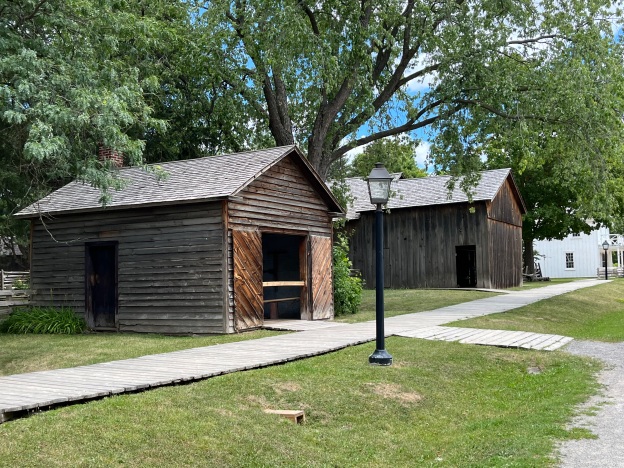August 7, 2022
Daniel and Elizabeth Stong settled on the property on the south-east corner of Jane Street and Steeles Avenue in 1816 when it was virgin forest. They cut down the trees and created a farm that was operated by four generations of the family until 1952. The Toronto Region Conservation Authority purchased the property in 1958 and created Black Creek Pioneer Village which opened in 1960. The village was developed by moving 40 endangered or abandoned buildings from other sites in Ontario to display life in the 1860’s. We visited the village to look at some of the other buildings and the exhibits located within them.
The doctor’s house was originally built in 1830 as a two generation farm house near Brampton. It has two separate entrances and the upstairs is fully divided so that two families could live here in relative privacy. A door on the main floor allowed them to pass between the two halves to join in family activities. The design is perfect to showcase a small town doctor’s house where the one side could serve as an office. An herb garden in the back yard would be cultivated to provide remedies that were learned from the indigenous peoples who had lived on the land for centuries.

Inside the doctor’s house is a display of the tools that were in common use in the mid-1800s. Drills, tooth extractors and saws were basic implements. Because people had to pay for the doctor’s services they often waited until they were in severe distress hoping to get better on their own. A house call would cost 50 cents, or roughly a half days wages and then every service would be charged separately on top of that.
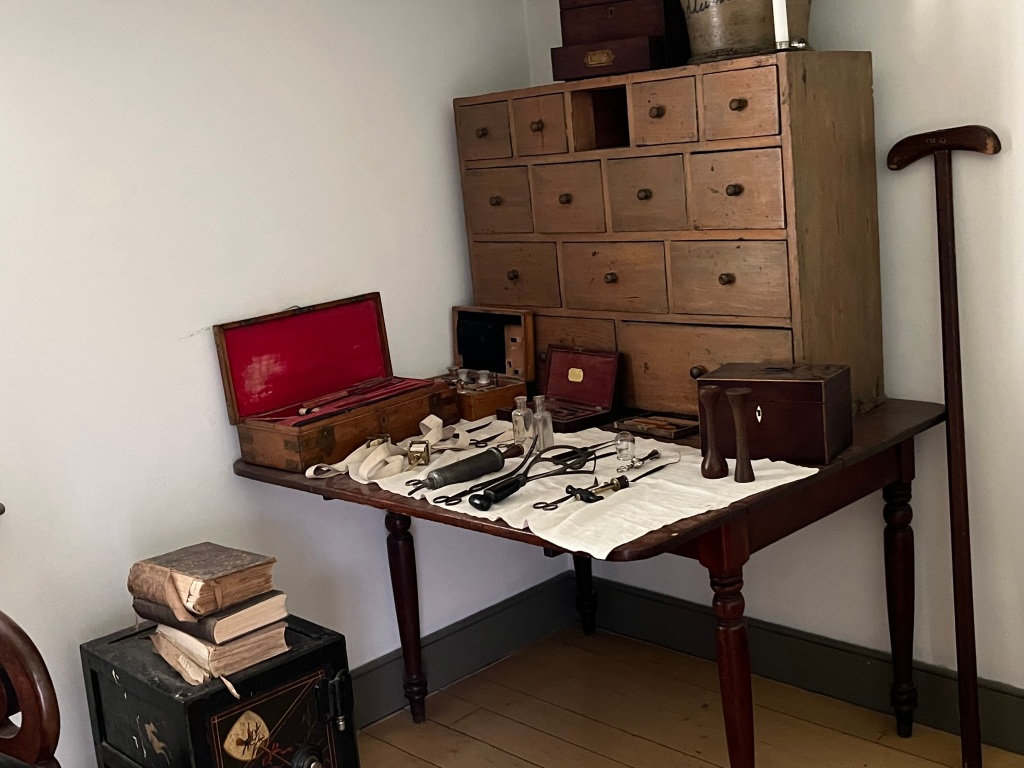
Mackenzie House was built in 1830 as a small log cabin. As the family grew the home became too small and so a kitchen wing was added as well as an upstairs area making it into a story and a half home. The house was originally located in Woodbridge and was built by Major Addison Alexander Mackenzie after whom Major Mackenzie Drive is named. The house is set up to display the historical home industries of clock making/repair and dress making.

The Manse was built in 1835 and is typical of four room cottages built in rural Upper Canada (Ontario) in the 1830s. It served as the manse for Reverend James Dick who was pastor of Richmond Hill Presbyterian Church from 1849-1885. In those times it was not very common to hold weddings in the church and many of them were conducted in the front room of this house. The building was also used as a store, a residence and a Sunday School before being moved to the village in 1978 where it compliments the Fisherville Presbyterian Church.

Burwick House was built in 1844 for Rowland Burr in the town of Burrwick which later became Woodbridge. This house represents the lifestyle of the middle class in this era. This is an example of the well proportioned and symmetrical Georgian style of architecture and was moved to the village in 1958.
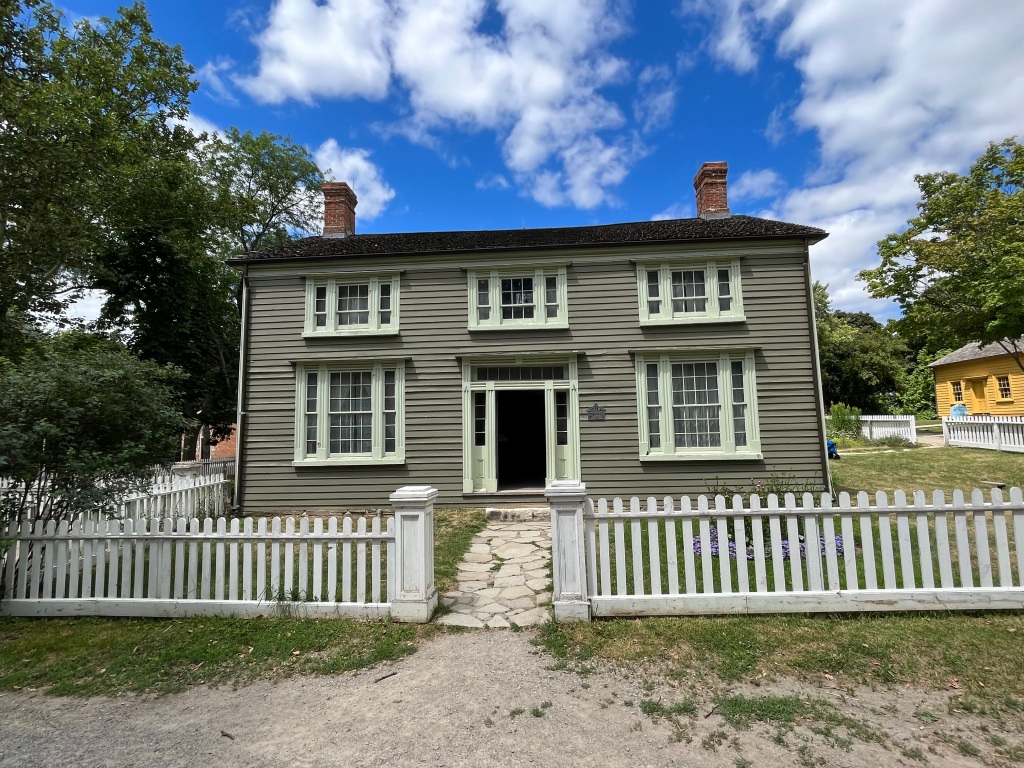
The Halfway House was built in 1849 by Alexander Thompson to provide a resting stop for stagecoach passengers and horses. It was originally located at Kingston Road and Midland Avenue along the road from Pickering to Toronto. It also served as a hotel, an apartment and also a store before being moved to the village in 1966.
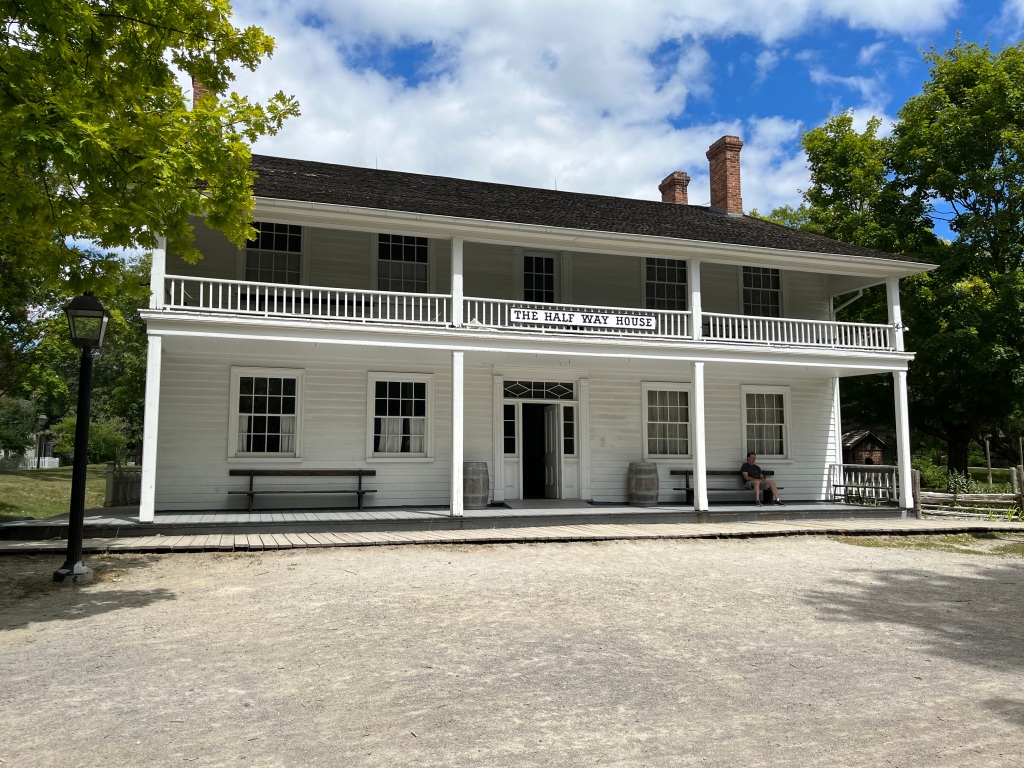
The apple storage cellar was built around 1850 in Edgely. It was built into the ground to provide storage to preserve apples, fruit and root vegetables. The storage bins would be layered with straw and produce using its 8 feet by 7 feet interior to keep food for winter and spring consumption. The field stone and brick structure was disassembled and moved to the village over a 65 day period.
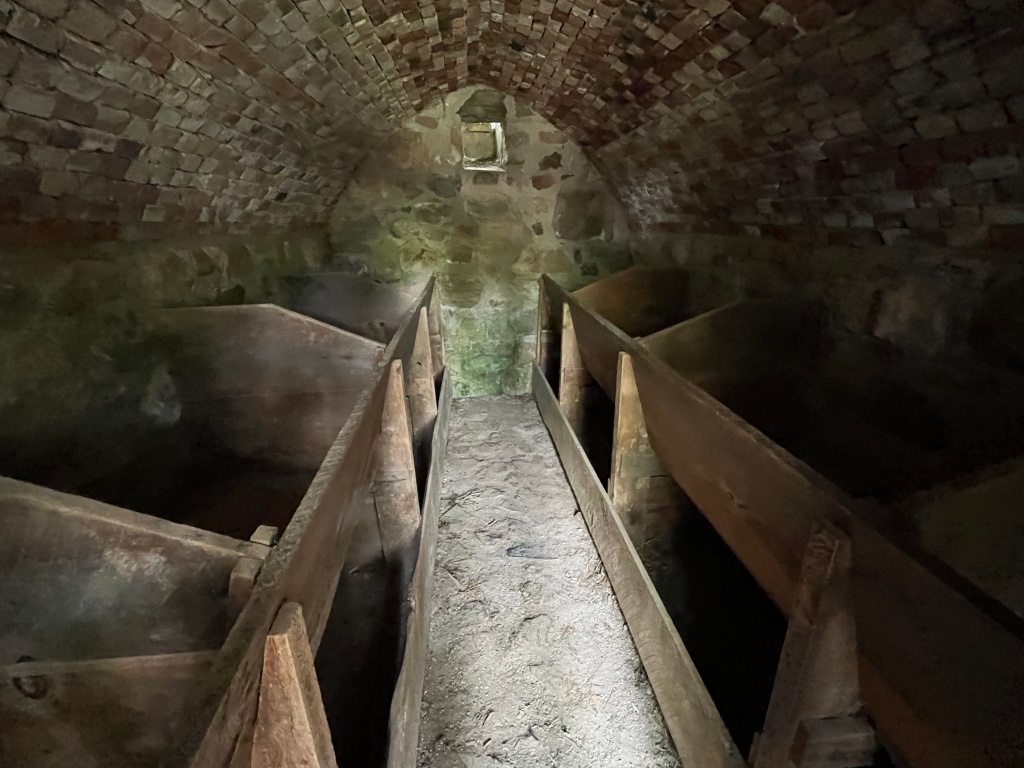
Charles Irwin’s weaving shop was located in the Kettleby Temperance Hall which was built in 1850. The same building also housed the town print shop when it was no longer used as a temperance hall. Weaving provided a wide range of textiles for household use and at one time there were over 600 weavers in Ontario.

The harness shop was built in 1855 just two lots south of the future black Creek Pioneer Village. The harness and saddle trade were essential to the early farming and transportation industries as they allowed for the efficient use of animal strength for labour. The shop was moved to the village in 1961 and has been open to the public since 1963.
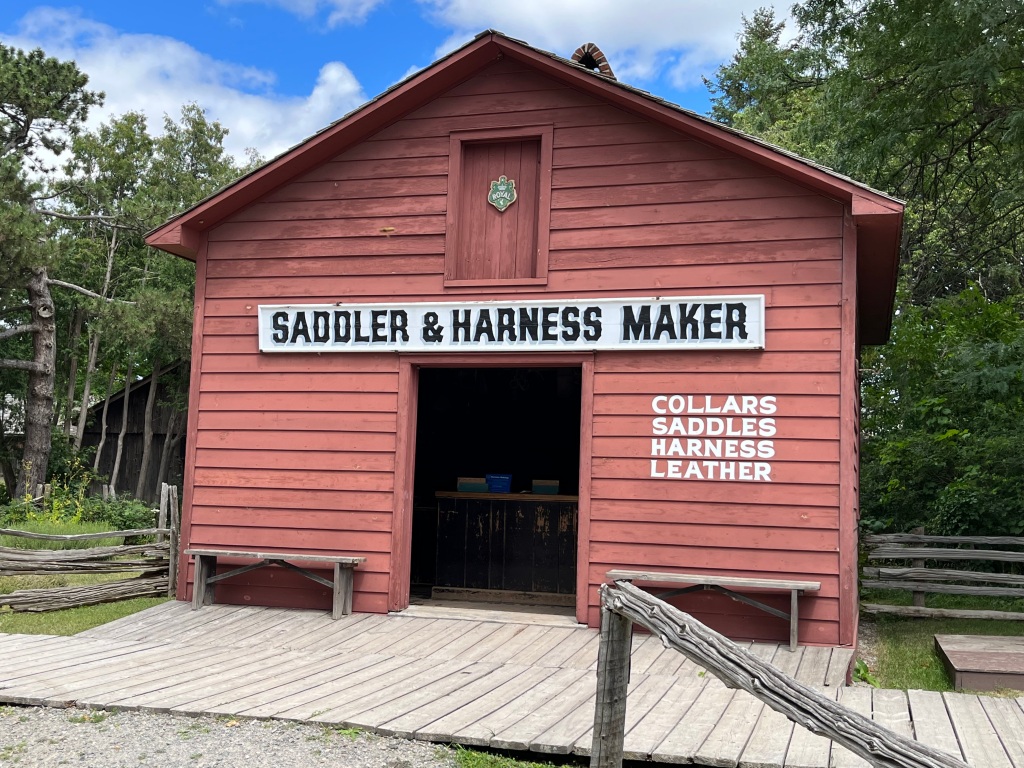
Dominion Carriage Works was built in 1860 in Sebringville as a blacksmith shop and wheelwright. As it grew in the 1870s it was expanded to a full carriage works with an upholsterer and a cabinet maker. When cars became more popular, the business declined but it carried on until 1972. The following year it was moved to Black Creek Pioneer Village with all of its patterns and tools. It has been restored and opened to the public in 1976.
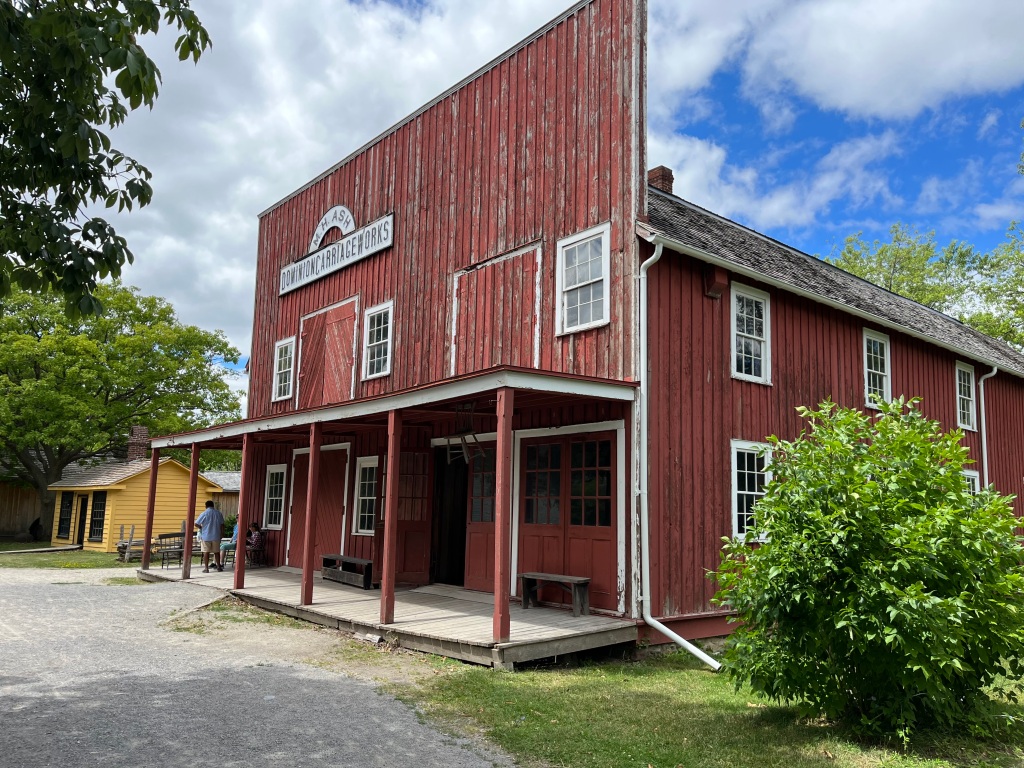
The village school was built in 1861 as Dickson’s Hill School in Markham on concession 7 and was known as School Section #17 Markham. Using local, hand made bricks, it was constructed for a total cost of just $1,078.79. The two separate entrances allowed boys to come through one door while the girls entered through the other one. Most one room schools in Ontario were closed by the 1950s and this one was vacant in 1960. At that time it was dismantled brick by brick and was then moved to Pioneer Village and reassembled.
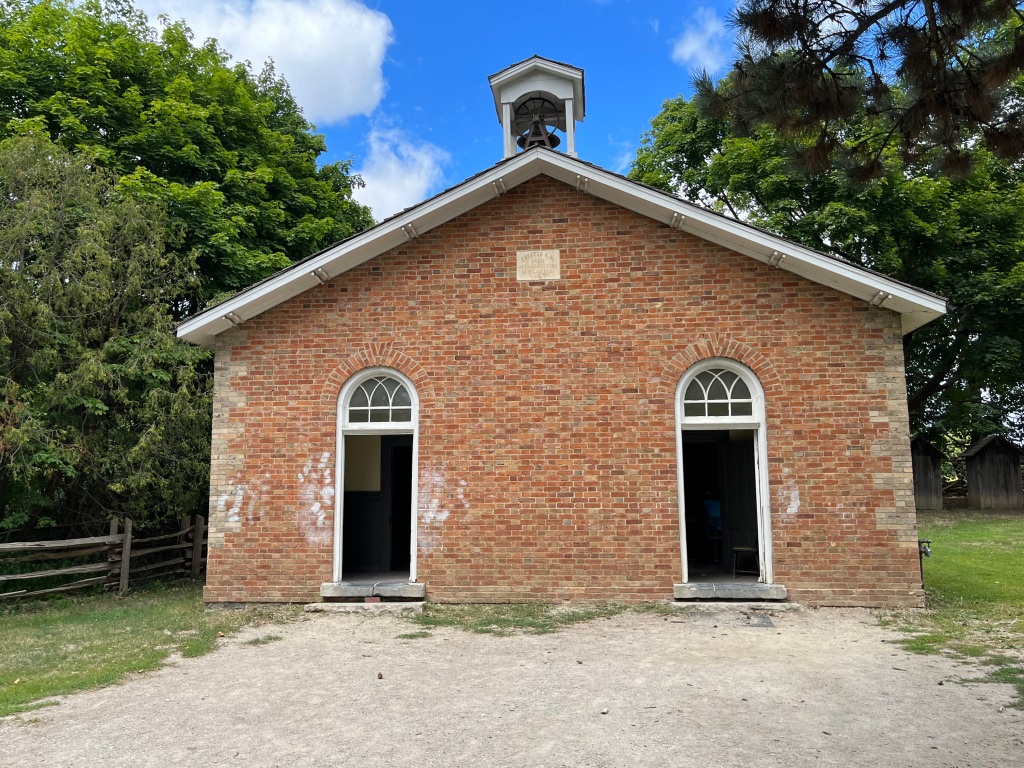
Inside, the school is set up like a typical one room school of the 1860s. The younger students would have sat closer to the front of the room while the older ones were at the back. The desks and fixed seating are not from this school but are from the same time period. A box stove at the back provided heat which was carried by the pipe near the ceiling to the front of the room where the chimney stood. Many of the buildings in the village were heated in this manner. The large windows on either side provided light and also opened for ventilation.

Our cover photo features the Fire House which was built as a storage or work shed in 1850. It houses an 1837 wooden fire engine that was used in Toronto for over 4 decades. Beyond the fire house in the photo is Henry Snider’s Cider Mill which was built in 1840 in the community of Elia at Keele Street and Finch Avenue. It could produce 500 gallons of apple cider per day.

Several buildings in the village have been featured in previous blogs. The Stong log cabin and second house as well as several of their outbuildings were featured in Black Creek Pioneer Village: Elizabeth Stong. Roblin’s Mill had it’s own blog called Roblin’s Mill. Laskay Emporium was featured in the story Laskay: Ghost Towns of the GTA. The Presbyterian Church was featured in our story Fisherville: Ghost Towns of the GTA.
Google maps link: Black Creek Pioneer Village
Like us at http://www.facebook.com/hikingthegta
Follow us at http://www.hikngthegta
Also, look for us in Instagram
